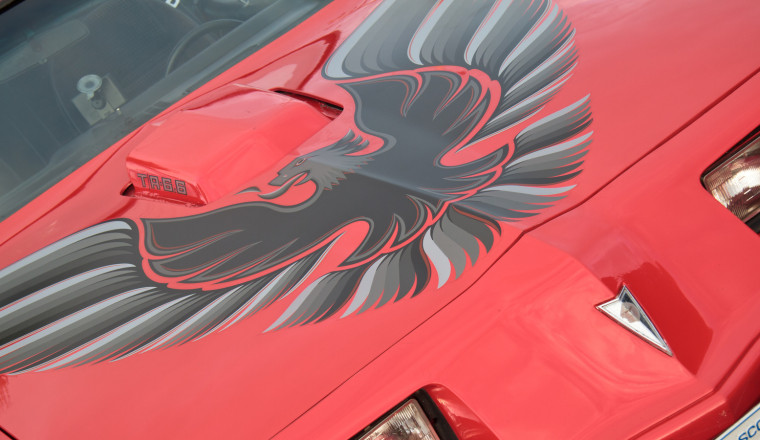
Even though Pontiac has been dead since 2009, most readers worth their mullets will recall that its most famous model, the Trans-Am, is based on the brand's more pedestrian two-door Firebird. With that in mind, it only makes sense that a goodly number of Trans-Ams wear a giant bird decal on the hood, right? Some folks call that symbol a phoenix or a hawk, while others go with the lighter "screaming chicken" moniker, but what is it really?
The Firebird name itself is based on General Motors' gas-turbine-powered Firebird concept cars from the 1950s. When the Firebird nameplate was pressed into service on an actual production car in 1967, its emblem was based on a piece of southwestern Native American jewelry: a Hopi bird pendant. However, the much more aggressive hood bird that would later surface on the Trans-Am is based on something else entirely.
Automotive designer Bill Porter — who's also responsible for the Trans-Am's stunning honeycomb wheels — was reportedly a collector of vases from American glass designer Louis Comfort Tiffany — some of which featured sweeping, featherlike tendrils up the sides. Porter made a quick napkin sketch of a bird in the style of the vase art while on lunch break one day, which eventually morphed into the decal that we know and love today.
 Tomeng/Getty Images
Tomeng/Getty Images
The vase-turned-bird decal was sampled on a clay mock-up of what would become the second-generation Firebird in 1970. However, lead designer Bill Mitchell hated the hood decal concept, so it was shelved. Mitchell might be famous for having a hand in designing the C2 and C3 generations of the Corvette, but he also penned the bustleback second-generation Cadillac Seville, which many Americans consider to be hideous, so take Mitchell's opinion with a grain of salt.
Eventually, Mitchell warmed to the idea of the hood bird since by the early 1970s, elaborate, gaudy stripe and decal packages were becoming de rigueur in lieu of actual performance on American muscle- and pony-cars. And with that, option code WW7 for the hood decal was born with a price of $55. Of course, what truly thrust the screaming chicken Trans-Am onto everyone's list of favorite 1970s cars was its prominent role in 1977's blockbuster film "Smokey and the Bandit." After that, other brands adopted hood animals, too. Examples include the Mustang King Cobra and Jeep's Golden Eagle package.
Between its debut in 1973 and the demise of the second-gen Trans-Am in 1981, the bird decal was available in a surprising 39 different colors and designs. The hood adornment was discontinued once the third-generation Knight Rider Firebirds and Trans-Ams were released in 1982. However, the bird did make a brief comeback for a couple years in the mid-1980s before being discontinued forever. And, oh yeah, we still don't know exactly what species of bird it's supposed to be.














